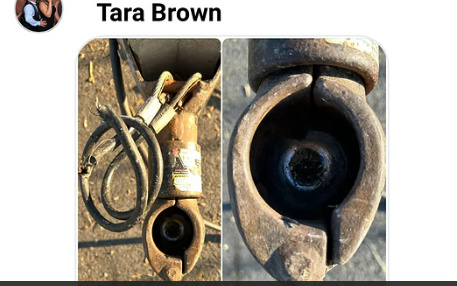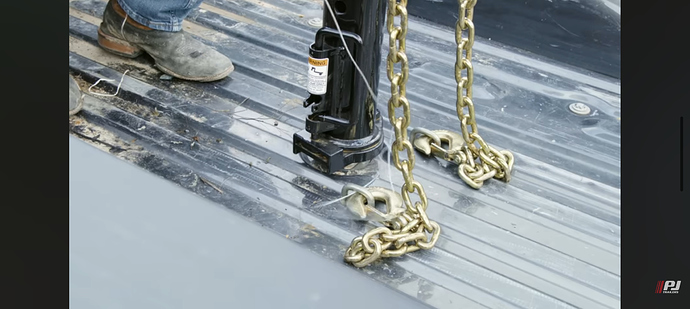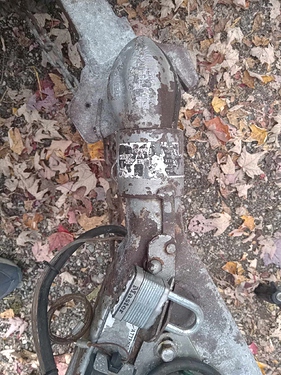I’ve thought about picking it up for a while. I’m addition to actually getting my manual 🤦🏻 this seems like a good reminder that I should buy it.
Gooseneck couplers, chains, and emergency brake set up:
- The e-brake cable should be about 2" shorter than your chains so that if the coupler fails, the brakes will kick in before the chains take a hit.
- Do NOT clip the e-brake cable to the chains, period. Ever.
- The chains not be crossed.
- The chains should be long enough to let you haul it normally, turn, etc, but short enough to keep the nose out of your cab.
This video says “attach the brake cable to the bed of the tow vehicle. Never attach the cable to the safety chains, chain receiver, or the gooseneck ball or support structure.”
But then has a video of attaching the cable to the chain receiver. Am I misunderstanding the terminology here?

That is not confusing to me. They mean the support structure that holds the ball itself.
I have rings in my bed, like those shown in the video- those rings are separate from the ball assembly’s support structure. Those rings are loops around the frame of the truck. If the ball and or it’s support structure failed, the rings are not impacted at all.
My chains and my balls are two separate pieces. I know this because I installed them.
If two separate pieces of my hitch system fail simultaneously, I have much bigger problems than stopping the trailer.
Ok but what is the “chain receiver” then? Isn’t that the ring you are referencing? I have those as well, for the safety chains.
I think my biggest problem is always keeping my trailer and horses safe, and IMHO that means stopping the trailer upright no matter what else happens.
If those two things fail simultaneously, your truck snapped in half. No matter what you have it clipped to in the bed, it didn’t pull the safety brake.
He means the clips on the chains when he says "chain receiver’- some chains have hooks, some have clips, etc- they receive the ring they are attached to.
Attach your e-brake to the ring that the chains attach to so you’re assured if it all goes bad, they engage just before the chains do.
But also shorten or replace my coil cable because it definitely won’t engage before the chains if it’s clipped to the same place. 🤦🏻
Um, you do you. This publication from Purdue will give you all the freedom you need to make your best decision. They offer arguments for both approaches, longer and shorter.
As Endless said if the ball AND the rings both fail simultaneously, you have bigger issues.
I’m going to solve my pressing issue of what’s for lunch:
To be clear, I’m not trying to be argumentative or complaining, just frustrated that I have been miseducated. I really appreciate your help!
This gooseneck debate is interesting, and deserves its own thread, but this thread is about a bumper pull horse trailer accident.
Personally, I think there are arguments to be made for slightly longer vs slightly shorter e brakes.
If the hitch fails on my either my big GN or my small 2h BP, I want the chains to catch it first and I’ll use the trailer brakes to do what’s possible to manage the situation. Only if the chains break do I want my trailer’s e brake cable to deploy, causing my brakes to lock up and slam it all to a very rough and ugly stop and honesty, at speed, an absolute shit show of a wreck.
This has always been my thought as well, but I could understand that argument in the opposite direction.
@mommy_peanut… do we know with certainty which exact model of coupler from Bulldog was on the wrecked trailer? I apologize if that’s been shared. We know the truck was using a 2 5/16" ball. I ask because there are both 2" and 2 5/16" on their website.
As far as maintenance, I found a good small independent trailer service shop and I take my trailer in every spring for bearings repack, check wiring lights rust tires etc and general safety check. Like I also take my truck and my car in for annual oil change, safety check, fluids etc
There are far fewer “moving parts” on a trailer than a truck, the bill is only a couple hundred, I don’t have the skills to DIY.
I had a lot of help from my trailering and horsemanship mentor as well as the trailer repair shop and got set up with the right hitch and chains etc for my rig combo. It was a bit overwhelming all the detail at the start!
Reading this thread was a good checklist for why things are set up as they are.
But I think if you were renting a trailer the mistakes about the ball size and the hitch height would be very easy to make especially if the rental place said it was all good
To me, ball hitches look so insubstantial to haul the trailer  despite all the miles I’ve logged safely.
despite all the miles I’ve logged safely.
I don’t know other than what the poster stated.
However there’s no way a 2” hitch would ever fit on a 2 5/16” ball.
The fact that they had already traveled 100’s & 100’s of miles safely, lead me to believe the trailer was hooked up correctly.
I am guessing but it looks like the hitch never opened up - the coupler looks intact and closed. Perhaps the ball was too small and just the right bump the trailer came off.

My husband drills all of our hitches so that we can lock them closed. No messing with those pins. Plus, it’s additional security for theft - mine is on even when not hitched to the truck.
Yes, my chains are crossed - it’s just the angle of the photo.
Smokey Bear also wants the chains crossed so they don’t hit pavement and cause a forest fire.


